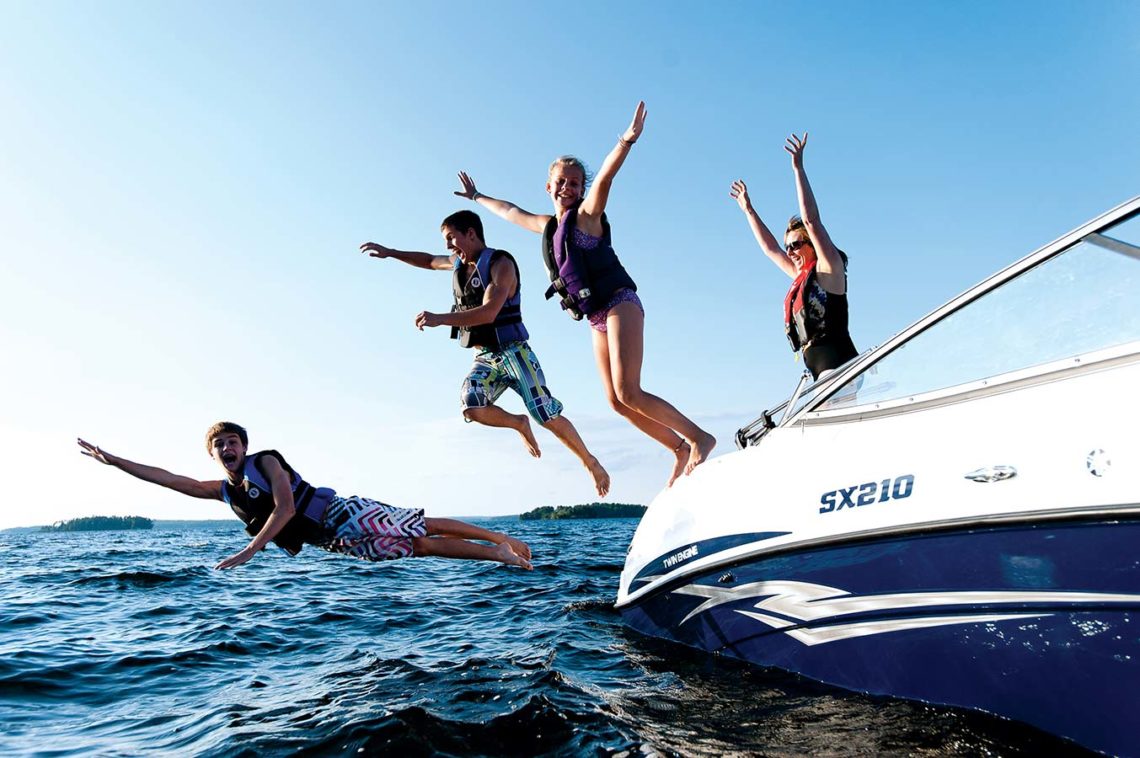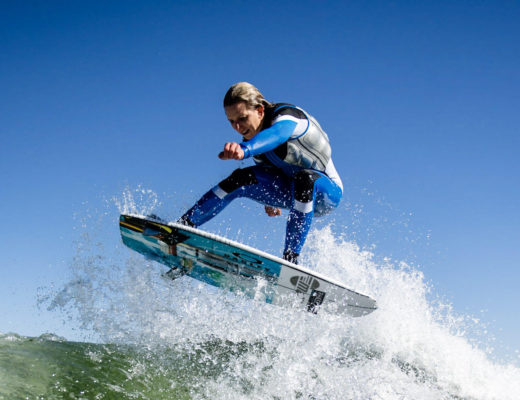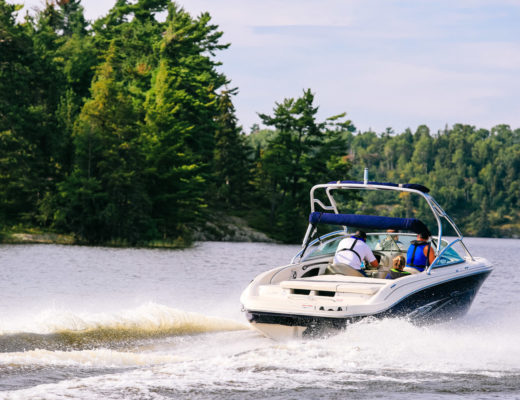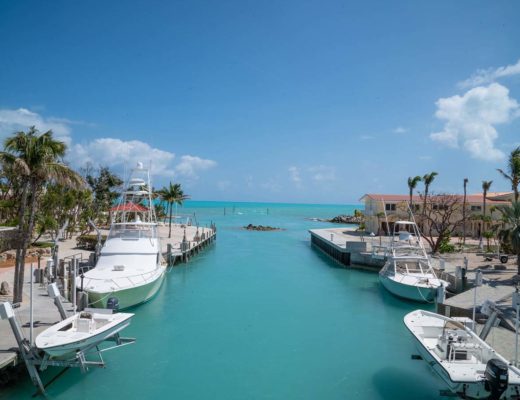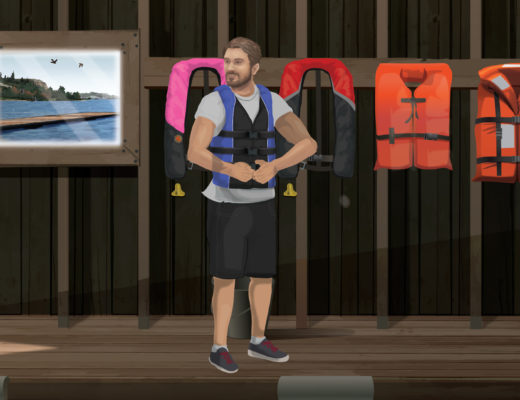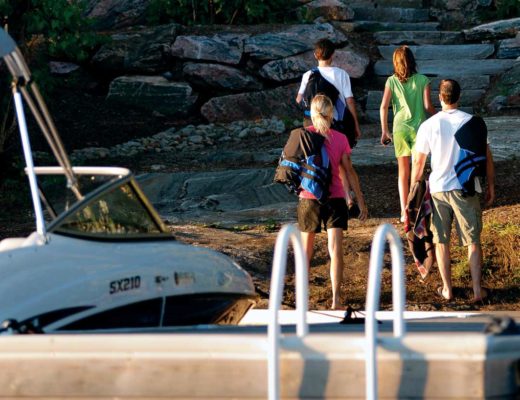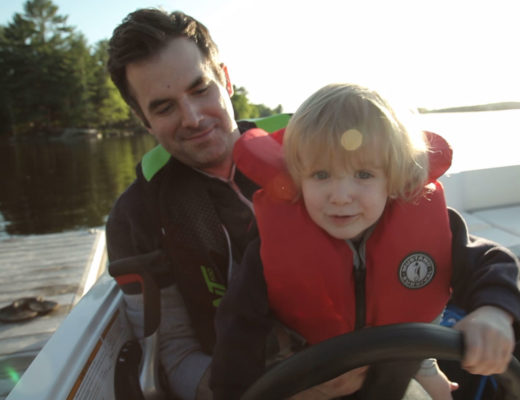Safety is everything, and it all starts with wearing the right life jacket.
Florida, otherwise known as the Sunshine State, has some of the best sparkling water in the nation, making it the perfect place for watersports and boat days. Over 18% of the state is water, and Florida has everything from lakes to shorelines. But spending the day out on the Florida shores is only a good thing if it’s done safely — and that’s where life jackets come in.
Whether you’re on a jet ski or relaxing on a boat, we recommend you wear a life jacket. In the state with some of the highest numbers of recreational boats in the nation, it’s important to stay safe. Here is everything you need to know about Florida’s life jacket laws.
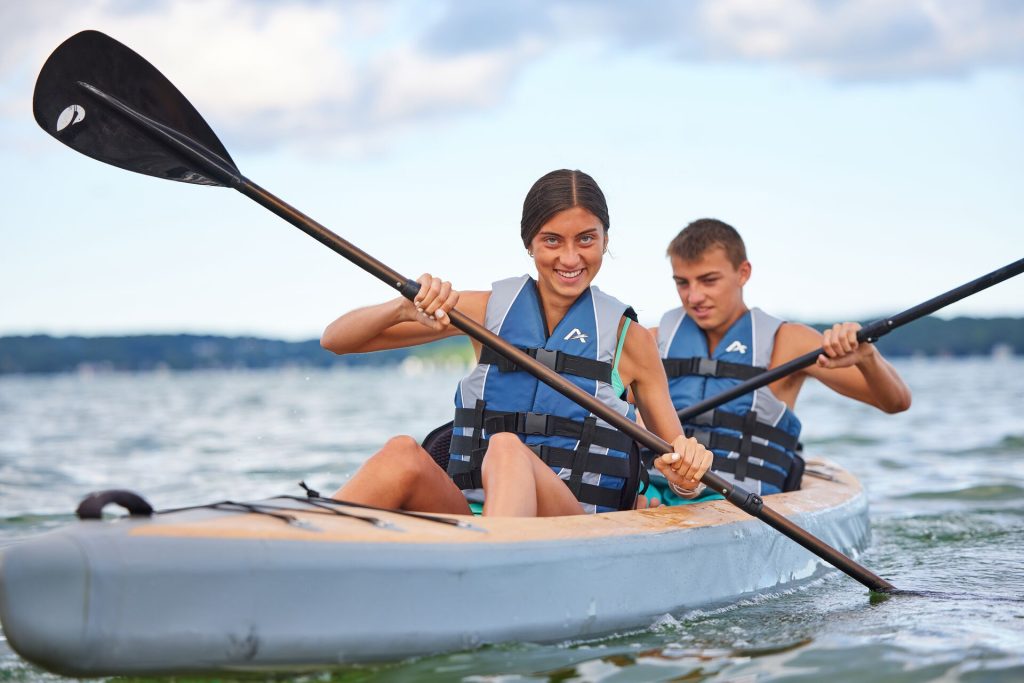
Who is Required to Wear a Life Jacket in Florida?
While it’s always safest for everyone to wear a life jacket when on the water, Florida’s life jacket laws require the following people to wear them:
- Children under 6 years of age while on any vessel less than 26 feet
- Each person onboard a personal watercraft
- Anyone being towed behind a vessel
Children under six years of age on a vessel greater than 26 feet are exempt from Florida’s life jacket law.
Why Should I Wear a Life Jacket in Florida?
While everyone may not legally be required to wear a life jacket in Florida, if the temperature changes, the current changes, or hidden hazards arise, even the best swimmer can benefit from wearing a life jacket.
According to the National Park Service (NPS), the top cause of death in national parks is drowning. Most drowning deaths occur close to shore and within close proximity to a life jacket. The NPS recommends that everyone wear a life jacket, no matter what water activity is being engaged in. By ignoring safety precautions, you are putting yourself and others at risk.
For pet owners: If you bring your pup on board, make sure it is also protected. Animal life jackets are a great investment for your pet and a surefire way to ensure safety.
What Are the Fines for Non-Compliance?
Violation of life jacket laws in Florida is a non-criminal infraction and can incur a fine of $50-$80 depending on the county.
The Florida Fish and Wildlife Commission’s Law Enforcement division enforces life jacket and marine laws in Florida.

Life Jacket Requirements in Florida
What should boaters know about the types of life jackets they can legally wear? Florida life jacket laws require wearers to use Coast Guard-approved life jackets.
All life jackets must be:
- Serviceable: fully functional and free of rots, tears, punctures, rips, etc.
- Readily accessible: each person on board should know where to find their life jackets, and they should be easy to get ahold of
- Right Size: the appropriate size for everyone on board
At least one Coast Guard-approved life jacket must be available to each passenger on the vessel. Appropriate life jackets should be the right size for the wearer, readily accessible, and maintained in good condition.
What Are the Different Types of Life Jackets?
Life jackets — which used to fall under the category of Personal Flotation Devices (PFDs) in the States — have several classifications that have changed and evolved. While the classification process is now different, life jackets classified by type are still allowed and approved by the Coast Guard as long as they’re in good condition.
By knowing the different classifications, you’ll be able to pick out the perfect life jacket for you and your needs.
Life Jacket Terminology
Though now known as the old labeling system, many boaters and states still use this terminology to talk about life jackets. Life jackets and PFDs with these older labels — the “type” labels — are still fine to use and are approved, but they are being phased out and replaced with new labels as time goes on.
The “old” terms for different types of life jackets in the U.S. are:
- Type I PFDs: Inherently Buoyant
- Type II PFDs: Near-Shore Buoyant Vests
- Type III PFDs: Flotation Aids
- Type IV PFDs: Throwable Devices
- Type V PFDs: Special-Use Devices
While these terms are still used consistently to describe life jackets, boaters and water sports enthusiasts should also become familiar with the new terminology.
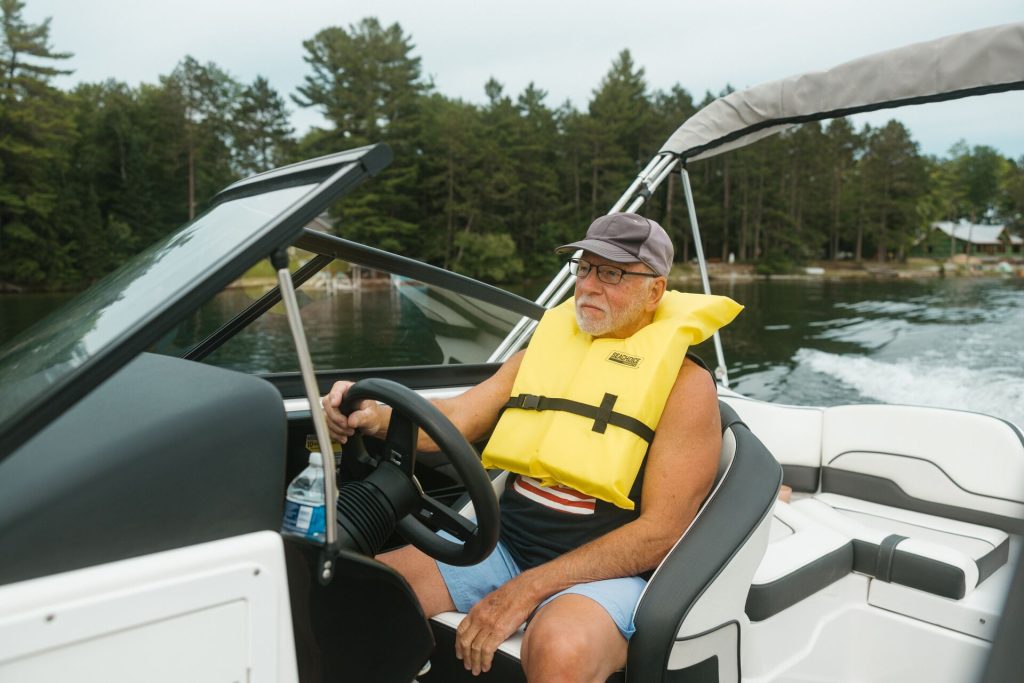
New U.S. Performance System Life Jacket Terminology
While life jackets categorized by type are still approved for use as long as they’re in good condition, the new U.S. classification system uses performance categories to categorize life jackets.
- Inherent Life Jackets: These devices are usually made of foam and are always buoyant. They are designed to float immediately without any action required by the wearer. They are adjustable, typically in vest form, and of an accessible price and maintenance standard. These jackets are a great choice for most activity levels and environments.
- Inflatable Life Jackets: These devices inflate with air when the wearer pulls the tube to inflate them. Inflatables come in various performance levels but are never recommended for weak or non-swimmers, children, or those on personal watercraft.
- Hybrid or Multi-Chamber Devices: These devices combine inherent materials like foam and an inflatable chamber. Hybrid devices typically perform with full buoyancy without inflation, and inflation adds additional performance that can sometimes even include turning and freeboard.
- Special Purpose: These devices are meant for specific activities or restricted circumstances and often require extra training or action by the wearer. This classification lends itself to extra buoyancy for whitewater rafting or providing additional visibility, inflatable belt pouches, or manual inflation devices.
Remember: it’s always crucial to choose a life jacket — no matter the terms to describe them — that is ideal for your activities on the water.
What Are the New Performance System Label Icons?
New life jacket labels will feature an icon and number to indicate the intended conditions for use. The numbers range from Level 50 to Level 275, with smaller-level life jackets intended for use in calm water and close-to-shore scenarios and higher-level life jackets ideal for rougher waters and situations where rescue may take longer.
- Level 50: This performance level is recommended for users with strong swimming skills and is best for close-to-shore scenarios where immediate assistance is available.
- Level 70: This performance level is recommended for calm or sheltered waters that are close to shore and where help is nearby.
- Level 100: These jackets are recommended for use in calm waters. However, they will provide enough flotation that the wearer will have more time to wait for rescue.
- Level 150: These devices are more buoyant and are appropriate for off-shore scenarios.
- Level 275: These life jackets are the most buoyant and are designed for offshore emergency rescue situations. They can be used by search and rescue crews and will handle the additional weight of tools, clothing, or equipment.
New life jacket labels will also feature a warning panel with important information about the device and its intended use. The panel will indicate activities that are not recommended for the device’s performance level, such as water skiing, towed sports, and personal watercraft operations.
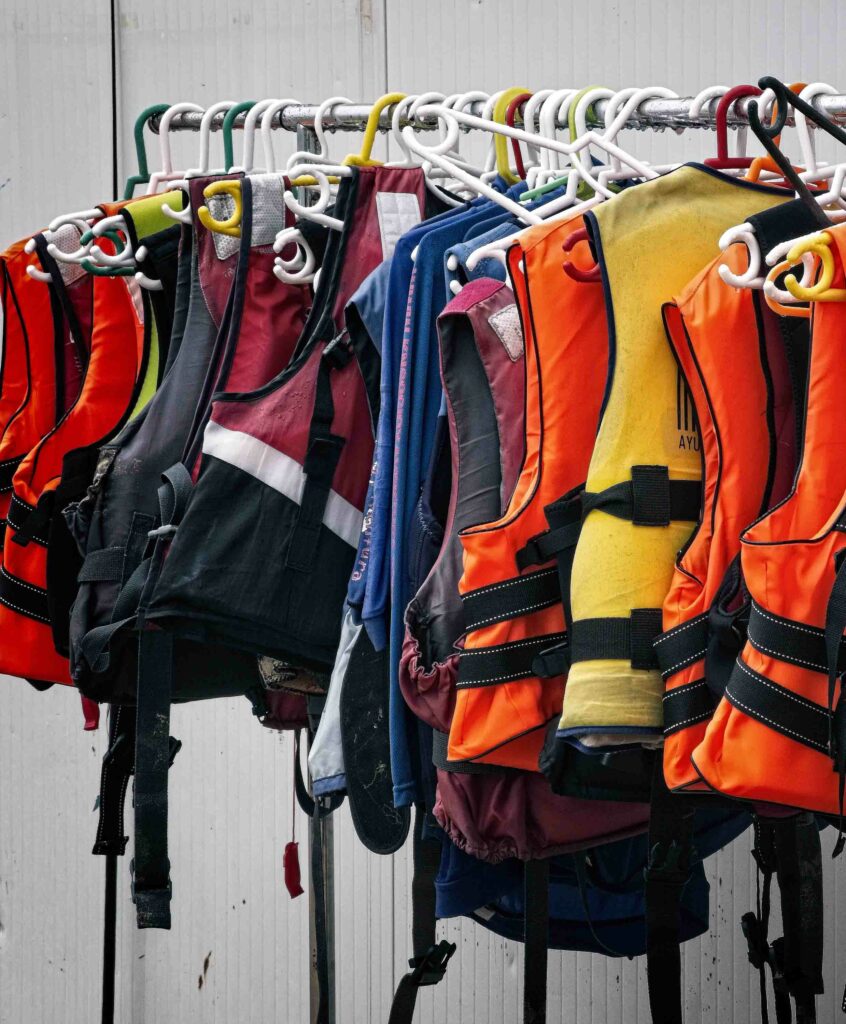
How to Fit Life Jackets Properly
Does your life jacket fit well? If it doesn’t, it could fail to save your life in an emergency.
Life jackets should be snug, comfortable, adjustable, and unable to rise above the wearer’s ears. Each person should wear a life jacket meant for their size, weight, and body type and intended for the activity.
The following tips will help you to adjust your life jacket properly:
- Put on a life jacket and make sure all pieces are fastened and zipped loosely. Then, adjust it from there.
- After zipping up the life jacket, tighten from the bottom first and work your way up. Snap the bottom in place.
- Adjust each side adjustment to make a snug fit. Keep them even so that your life jacket doesn’t ride up on either side.
- Lastly, tighten the shoulder straps.
Once adjusted, raise your hands above your head. If the jacket rises above your chin or feels incredibly tight, adjust it for another size. You should be able to move comfortably in the life jacket.
If possible, do a fit test in the water. Float onto your back and make sure the life jacket doesn’t ride up or slip over your head while keeping you afloat
How to Care for Your Life Jacket
Taking care of your life jackets is crucial to ensure they’ll work when needed. If you store and maintain your life jackets, they can last for many seasons.
Here are a few tips for maintaining life jackets so that they last:
- Use a gentle cleanser made for life jackets to wipe them down after use.
- Let jackets drip-dry, then store in a well-ventilated area.
- Before using them again, check life jackets each season for any loose fastenings or tears.
Note: Do not lay jackets in direct sunlight or heat, as this can eventually affect their buoyancy.
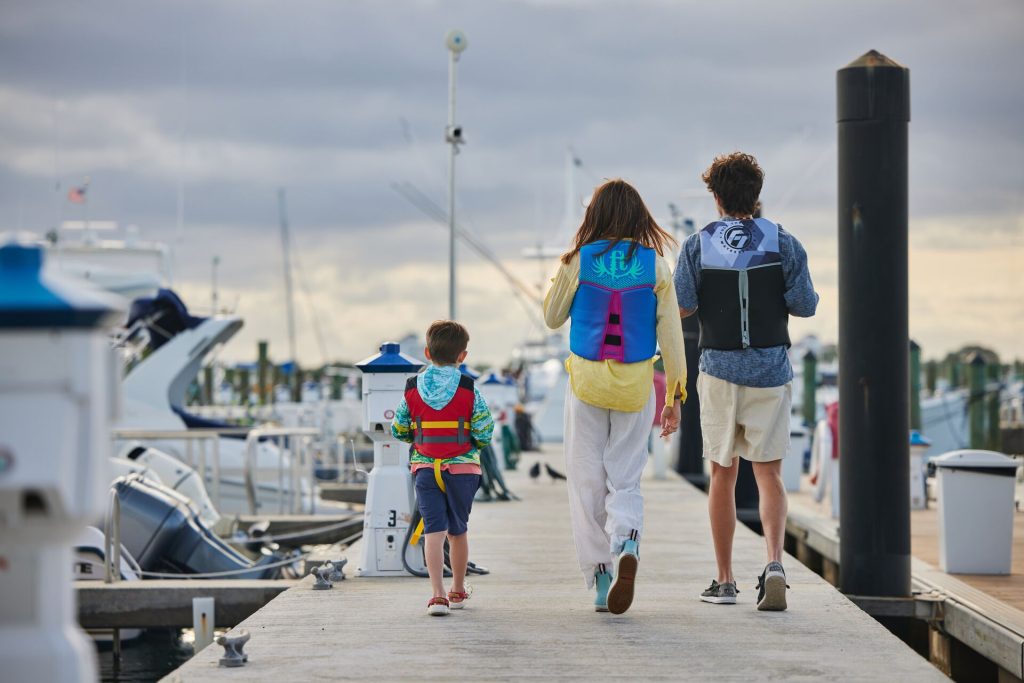
Follow Florida’s Life Jacket Laws for Safe Boating This Season
Safety is everything to us at BOATsmart!. We’re here to help you make sure that every boat and personal watercraft operator is legally and responsibly able to be on the water.
In Florida, everyone born after January 1, 1988, must have a Boating Safety ID Card to operate a boat of 10 horsepower or more legally. In addition, operators must have their photo ID.
By using BOATsmart! as your boating safety education provider, you’ll be prepared for any water adventure that comes your way. With animated and narrated lessons built to capture your attention and root in your memory, our courses are perfect for boaters of any age.
As a Coast Guard and NASBLA-approved boating educator, BOATsmart! is the best choice for an efficient, accredited, and information-packed boating safety education course.
Originally published February 16, 2021. Content most recently reviewed and updated for accuracy and relevancy September 9, 2024.
